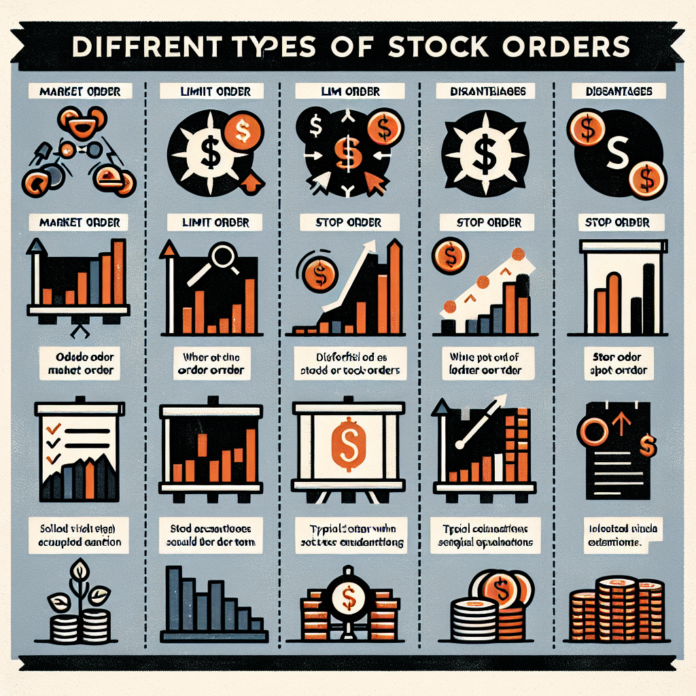Navigating the stock market can be overwhelming for newcomers and seasoned investors alike, especially when it comes to the different types of stock orders. Understanding when and how to use various order types can significantly impact your trading success. Here’s an essential guide to mastering stock order types, including market orders, limit orders, and more.
Market Orders
A market order is the most basic type of stock order. It is an order to buy or sell a stock at the best available current price and is typically executed almost instantly during trading hours. Market orders are best used when achieving an immediate execution is more important than getting a specific price.
While market orders ensure that your trade is executed, they do not guarantee the price of the transaction. Thus, in a highly volatile market, the price you pay or receive can be quite different from the last traded price you saw.
Limit Orders
Limit orders allow traders to specify the price they want when buying or selling a stock. A buy limit order can only be executed at the limit price or lower, and a sell limit order can only be executed at the limit price or higher. This control can help investors manage costs, but it comes with the risk that the order may not be executed if the stock does not reach the specified price.
Limit orders are valuable when precision is more critical than execution, for instance, if you’re aiming to buy a stock at a dip or sell at a peak.
Stop Orders and Stop-Limit Orders
These orders are used to limit losses or protect profits on a stock you own.
- A stop order, also known as a stop-loss order, becomes a market order once a certain price level is reached. It does not guarantee the sale price; instead, it activates the order.
- A stop-limit order converts into a limit order, not a market order, when the stop price is hit. This can prevent your order from being executed at a price far from your desired stop level but may also risk the order not being executed at all.
Using Stop and Stop-Limit Orders is essential for risk management in your portfolio, especially when you are unable to monitor your positions constantly.
Other Order Types
Aside from the basic order types, there are advanced options:
- Trailing Stop Orders: A type of stop order that locks in profits by enabling a position to remain open as long as the price is moving in the investor’s favor.
- Good Till Canceled (GTC): This order remains active until the investor cancels it or the trade is executed.
- Day Orders: If not executed, these orders automatically expire at the end of the trading day.
- All or None (AON): This order ensures that you buy or sell all the shares you want or none at all.
Choosing the Right Order Type
Deciding which order type to use depends on your investment strategy, risk tolerance, and market conditions. Market orders are about speed, limit orders give control over price, and stop orders are about reducing potential losses or protecting gains.
To educate yourself on when to use different orders, consider resources such as Schwab’s Order Type Basics. When you’re ready to trade, brokers like E*TRADE offer a variety of order types for their customers.
Tools for Traders
Most online brokers have tools that can help you select the right order type for your trading strategy. Check out platforms like Interactive Brokers for a suite of professional tools and order types.
Conclusion
Mastering different stock order types can be a significant advantage in your trading arsenal. By using the appropriate order type for your strategy and market conditions, you can better manage risk, lock in profits, and achieve better price execution. Always do your research and consider practicing with a simulated trading account before executing live trades. Remember, no single order type is superior in all situations; it’s about matching your order choice with your investment goals and the market environment.




 AGF-B.CO
AGF-B.CO